Ernst Haeckel and the Microbial Baroque
Nature is art is design is science
David Brody
In 1895, a group of mountains along the spine of the Sierras in California was named to immortalize the apostles of evolution, pioneers of a new enlightenment. Mts. Darwin, Agassiz, and Mendel topped the elevational pecking order. Next in altitude, at 13,418 feet–higher than Mts. Wallace, Lamarck, and Huxley—came a peak named for the German zoologist Ernst Haeckel, who at the time of christening was in the full vigor of his remarkable career.
You may not have heard of Ernst Haeckel (1834-1919), but for 50 years or so, until his death, he was the most influential evolutionary theorist on the map. He did more to spread the gospel of evolution than all his fellow snow-capped honorees combined, lecturing, demonstrating, thundering, and publishing dozens of books, some technical, some popular. In the decades before World War I, prominent display of Haeckel’s books was de rigeur in European or American households seeking to seem educated, up-to-date, and non-dogmatic; his opinions—spiritual, aesthetic, philosophical, political—carried the imprimatur of unquestioned scientific objectivity. But Haeckel was more than a progenitor of the Carl Sagan-like scientist-celebrity. His immense ambition was founded upon a visionary’s graphic talent, manifested in biological illustrations so hallucinatory that his lithographs of microorganisms still threaten to overwhelm all sorts of categorical distinctions between art, nature, and science. These images, however, cannot be examined without acknowledging the omnivorous, Faustian hunger for consolidation of knowledge that produced them.
Haeckel had made his name, in the 1860s, by describing hundreds of new species of radiolarians, publishing volume after volume of taxonomic description of this order of marine protozoan. What really set his work apart, though, was not the science but the plates. Whether this emphasis was entirely legitimate was debated at the time—had Haeckel over-embellished and idealized his observations or, as he claimed, had he discerned for the first time their underlying crystalline structure? Certainly no biologist before him had applied the study of solid geometry to precise descriptions of organic phenomena, and the penetrating insights resulting from this détente of disciplines seemed to justify the boldness of Haeckel’s drawings. If the images were not optically true, then perhaps they were truer than true. Wasn’t a search for the pattern beneath the noise the higher purpose of science?
If certain of Haeckel’s colleagues were dubious, the public was not. Weltratsel (The Riddle of the Universe), first issued in 1895, sold more than half a million copies in Germany alone, an unheard-of number for the time, and was translated into thirty languages. Kunstformen der Natur, or Art Forms in Nature published in installments between 1899 and 1904, has arguably enjoyed an even broader audience. Its lavish images of self-enlacing, baroque jellyfish, with their translucent baldachins of tendrils, and his constellations of plankton magnified to Romanesque filigrees,[1] directly influenced the more self-consciously decorative, asymmetrical vocabulary of Art Nouveau and Jugendstil—René Binet’s cast iron entrance gate to the 1900 Paris Exposition, for example, was modeled on Haeckel’s beloved radiolarians.[2] Art Forms was eagerly perused by the Surrealists, notably Max Ernst, and almost certainly by the Bauhaus painters Klee and Kandinsky. Thus, even contemporary artists who have never seen the book can hardly have avoided the pulsations of its influence.[3] But, about this, more later.
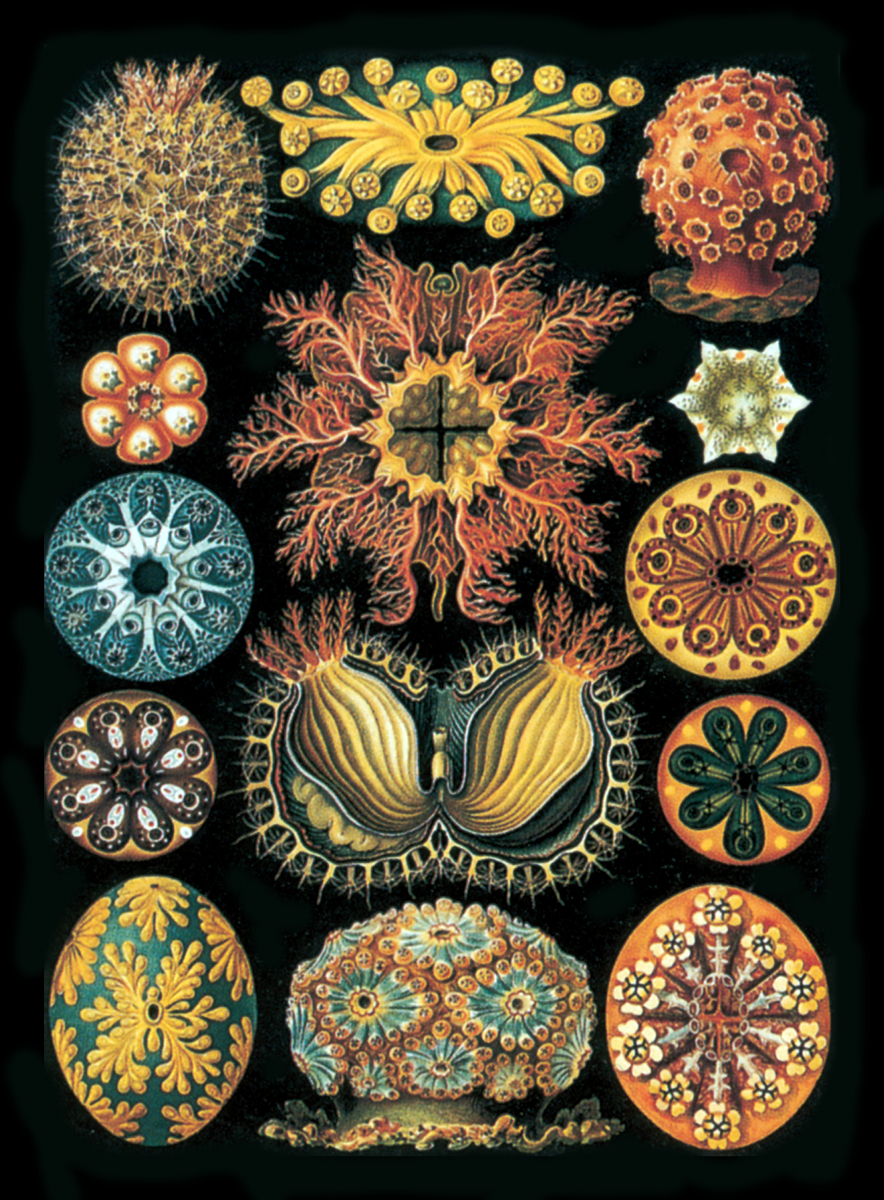
From his professorship in Jena, the university town that was associated with the immortal polymaths Goethe, Schiller, and Hegel, Haeckel advocated Darwinism to a hostile world, declaring war on the medieval mystifications of religion and unleashing a barrage of invective at the Catholic Church. In contrast to Darwin and most of his fellow evolutionists, though, he did not confine himself to the role of sober secular materialist. His almost mystical obsession with a rational and progressive march toward biological perfection was far removed from the random impersonality of natural selection, and his contempt for religion did not stop him from establishing one of his own. As his theories developed, he began to attack not only anti-scientific ritualism, but dualism in general. Evolution proved that man and nature were not separable, and thus neither were matter and mind. “Crystal souls”[4] inhered in the very minerals we were made of, human intellect being simply their higher expression achieved by means of the evolutionary drama. Accordingly, there was no need to project the existence of a creator outside the physical world: spirit lay within. In 1906, Haeckel founded a progressive church based on this quasi-scientific pantheism, calling it the Monist League in opposition to the dualistic religions. The Judeo-Christian ancestry was no more than a living fossil that could now be left behind.
Haeckel’s immodest claim to have reconciled age-old antagonisms between science and spirit slipped, incrementally, toward the far side of social Darwinism. His philosophical support for racist eugenics, coupled with his widespread popular appeal, was arguably crucial to the legitimization of such ideas in Germany, and historian Daniel Gasman has gone so far as to lay blame for the Holocaust virtually at Ernst Haeckel’s feet. Gasman demonstrates, convincingly, that Haeckel was an anti-Semite, and that his ponderous authority “did much to bring the Jewish question into the realm of biology.”[5] Social Darwinism would better be named Social Haeckelism, it seems. Of course, racism and eugenics were in the very air of fin-de-siècle, “scientific” culture, and Gasman’s view of Monism as a wellspring underlying everything from French Symbolism to Futurism, Surrealism, and the Bauhaus is thinly documented and a bit monomaniacal in its own right. Still, consider this passage from Haeckel’s worldwide bestseller The Riddle of the Universe:
The statement of the apocryphal gospels, that the Roman officer, Pandera, was the true father of Christ, seems all the more credible when we make a careful anthropological study of the personality of Christ. He is generally regarded as purely Jewish. Yet the characteristics which distinguish his high and noble personality, and which give a distinct impress to his religion, are certainly not Semitical; they are rather features of the higher Arian [sic] race.[6]
The Monist League’s promise of a scientifically sanctioned and racially purged spirituality appealed to the German elite, and after Haeckel’s death, the League’s longstanding argument that state policies must not interfere with evolutionary necessity began to gather influence. The postwar economic crisis was theorized as a result of immigration and cultural decadence; the lower races, it was reasoned, must no longer be coddled into artificial survival if the German people were to thrive. Nature itself decreed it.
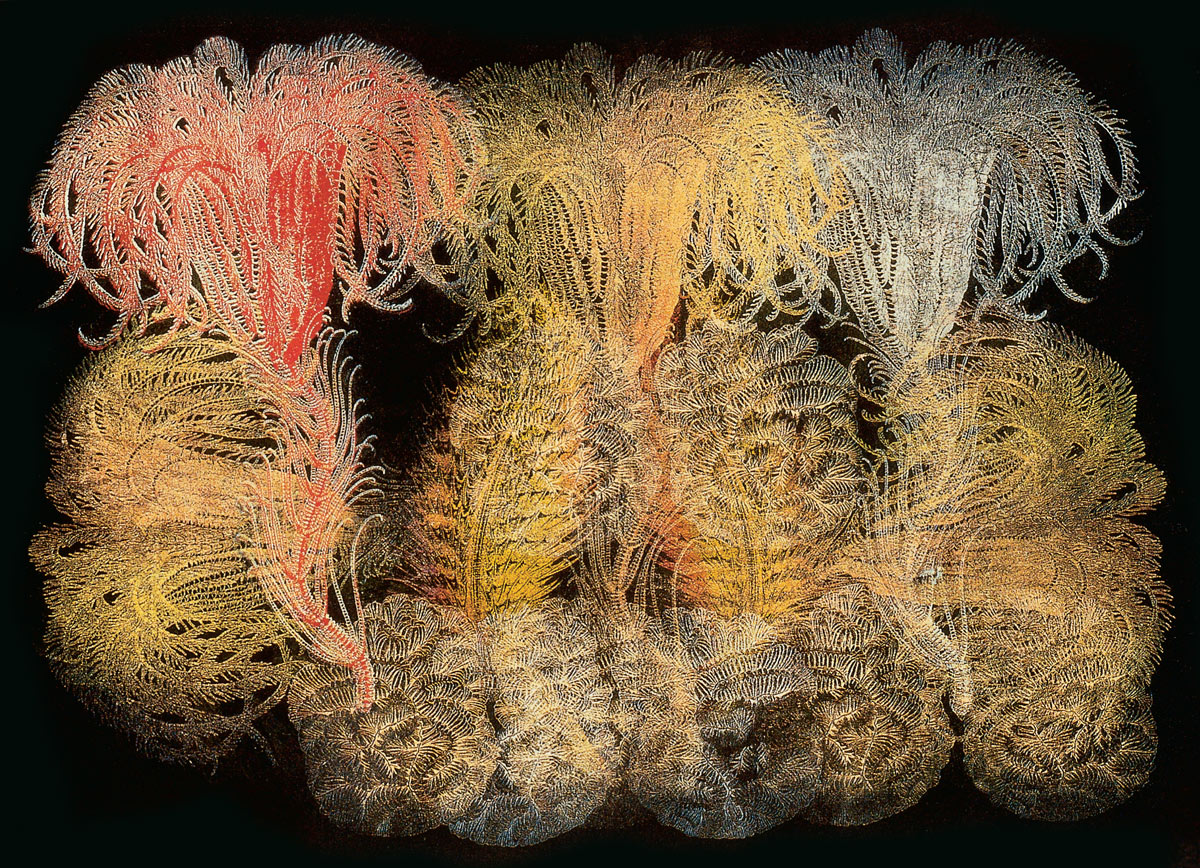
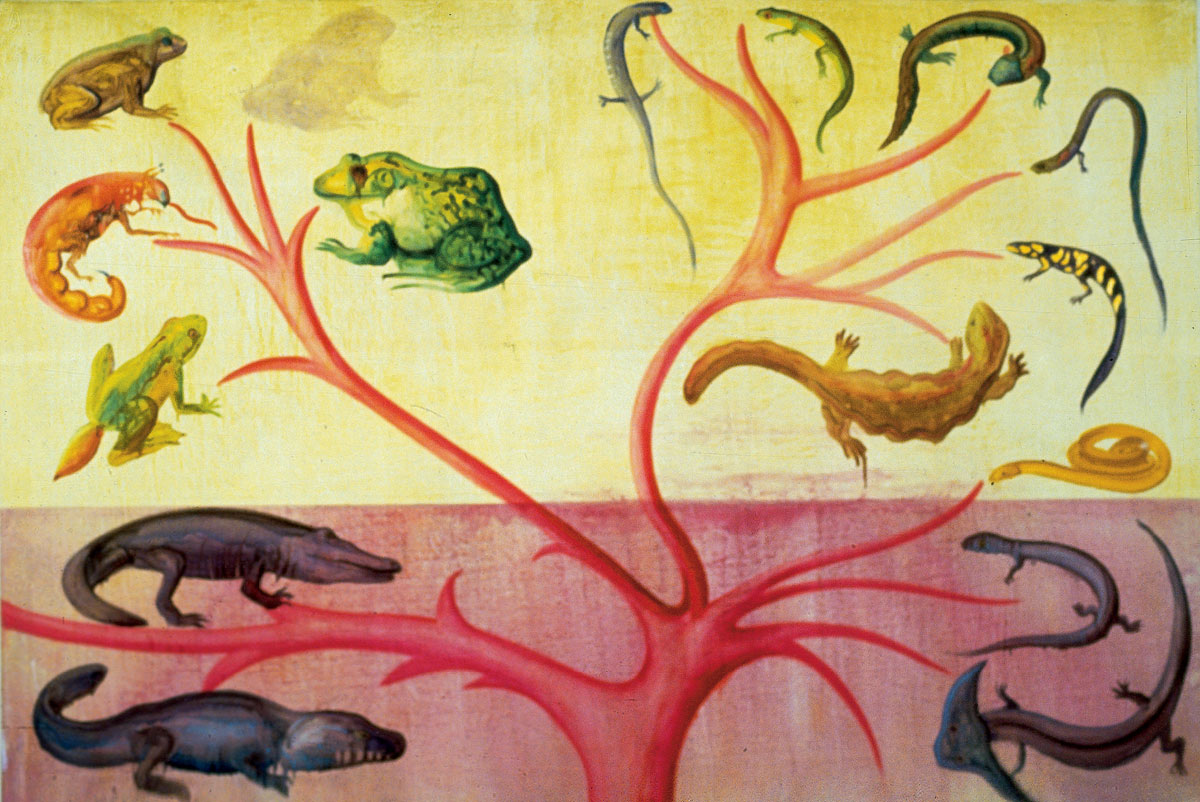
Posthumous association with the methodical madness of the Nazis has cast a retrospective pall over Haeckel’s undeniable achievements in microbiological taxonomy; his grander evolutionary theories have been debunked. Nevertheless, Art Forms in Nature continues to inspire and provoke the artists who, like Ernst or Kandinsky before them, stumble upon its gorgeously elaborated plates. Admittedly, the boundaries between art and science have never been, and never can be, absolute. But their progressive and mutual violation may well turn out to be a defining obsession of 21st-century art, and there is certainly a renewed concern, on the part of contemporary artists, with the empirical mystique of the bio-lab—with its statistical procedures and DNA/digital frontier on one hand, its viscosities and oozings, its creepy-beautiful microcosmic landscapes on the other. Given his pervasive influence and subsequent, near-complete eclipse, I wondered how many artists today were actually familiar with Haeckel’s work. And, I wondered if those who have looked deeply into Haeckel and considered his example in the development of their own art might discern, in his triumphally willed organic patterns, a graphic signature of the scary ideology that selective cultural memory has lopped away. I conducted an informal poll, and sure enough: from Alexis Rockman and Philip Taaffe, who have borrowed from Haeckel’s prints directly; to Alex Ross, Karen Arm, and Tricia Keightley, whose working premises have been informed and inflamed by his aestheticization of microscopic rendering; to Fred Tomaselli, Susan Jennings, and Tom Nozkowski, whose engagements are mixed with severe critique, Haeckel’s influence remains palpable in the studios of New York artists.
For these visual thinkers, the discovery of Haeckel’s portfolios, whether received as art or science, or both, or neither, has been revelatory. Once entranced, however, many also register an ambivalent attraction/repulsion to Art Forms’s romantically totalizing worldview, to the heavy, structuralizing hand that renders medusae as swimming chandeliers, and echinidea as hovering spacecraft. Most of the artists with whom I spoke had no idea of Haeckel’s proto-Fascist past. Nevertheless, many seem to have intuited something of that spirit from the material before them on the page.
In their overall patterning, these pages—studded with elaborately symmetrical groupings, usually floating over a black void—are as striking as are the specimens themselves. A plate from Art Forms can minimize empty space to an almost neurotic degree, laying out finicky, jewel-box arrangements of like-to-like in vertical columns. This bilateral approach to display threatens to overpower the subtleties of individual organisms, whose symmetries tend to be radially complex, their multiple digits or leaves twisting with restless animation so as to bring maximal morphology into view. Sometimes the heavy-handed whole exceeds the sum of its delicate parts, sometimes not. Indeed, if one sees Haeckel’s lust for unification as suspect—leading to overdetermined (though fascinating) art, and bad (though compelling) science—then the very characteristics which attract an artist to his images— their integrated, harmonious, “monistic” design—would be their most dangerous and dishonest features.
Yet this sort of judgment may itself be overdetermined. Haeckel’s florid conflation of aestheticism with empiricism made him a lesser scientist in some ways—leading him, on occasion, to fudge his illustrations for the sake of a beautiful argument. But it may also have made him a greater one, his formal acuity and imagination leading to genuine morphological discoveries. And, if the miscegenation of disciplines made him less of an artist—operating covertly, as it were, never quite seizing an artist’s prerogative or admitting to an artist’s seductions—in other ways, the rigors of the scientific idiom seem to have freed him, allowing him to channel his enduring talent for formal articulation into an almost superhuman penetration, focus, and deftness of hand.
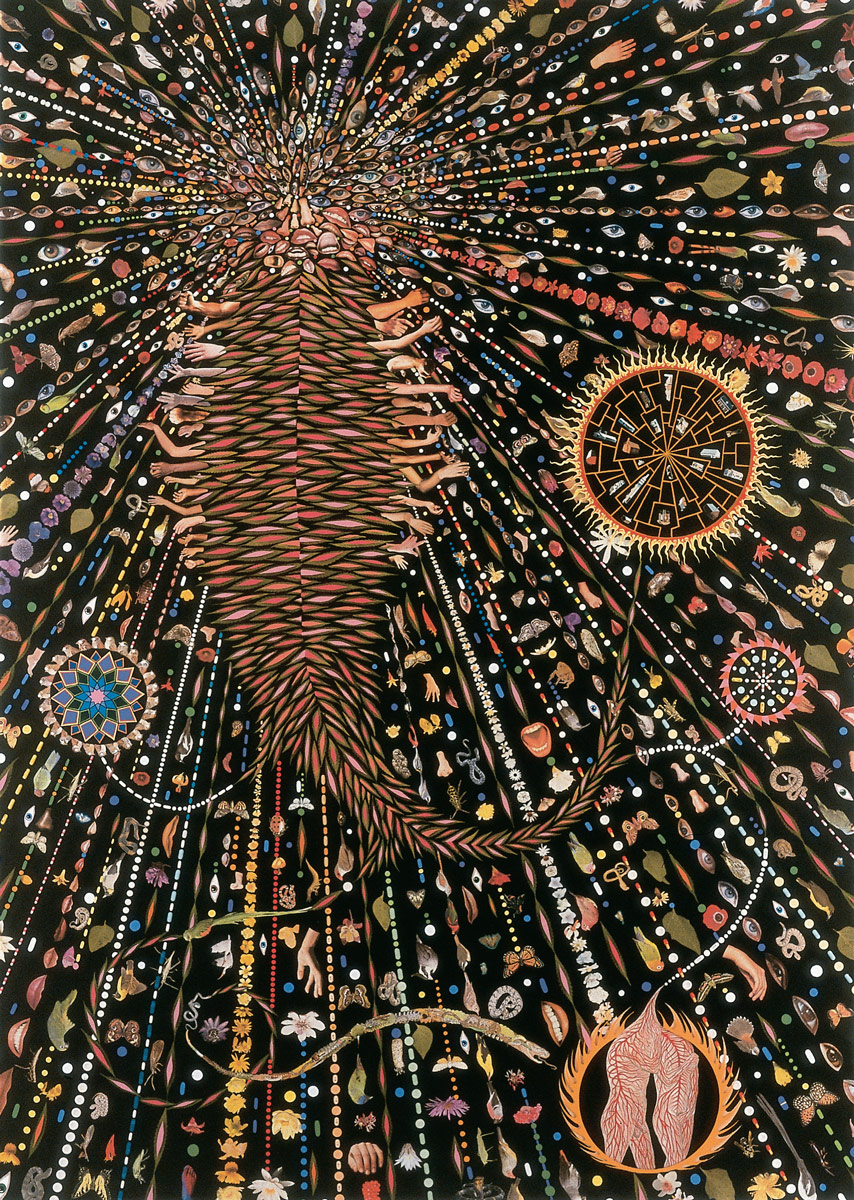
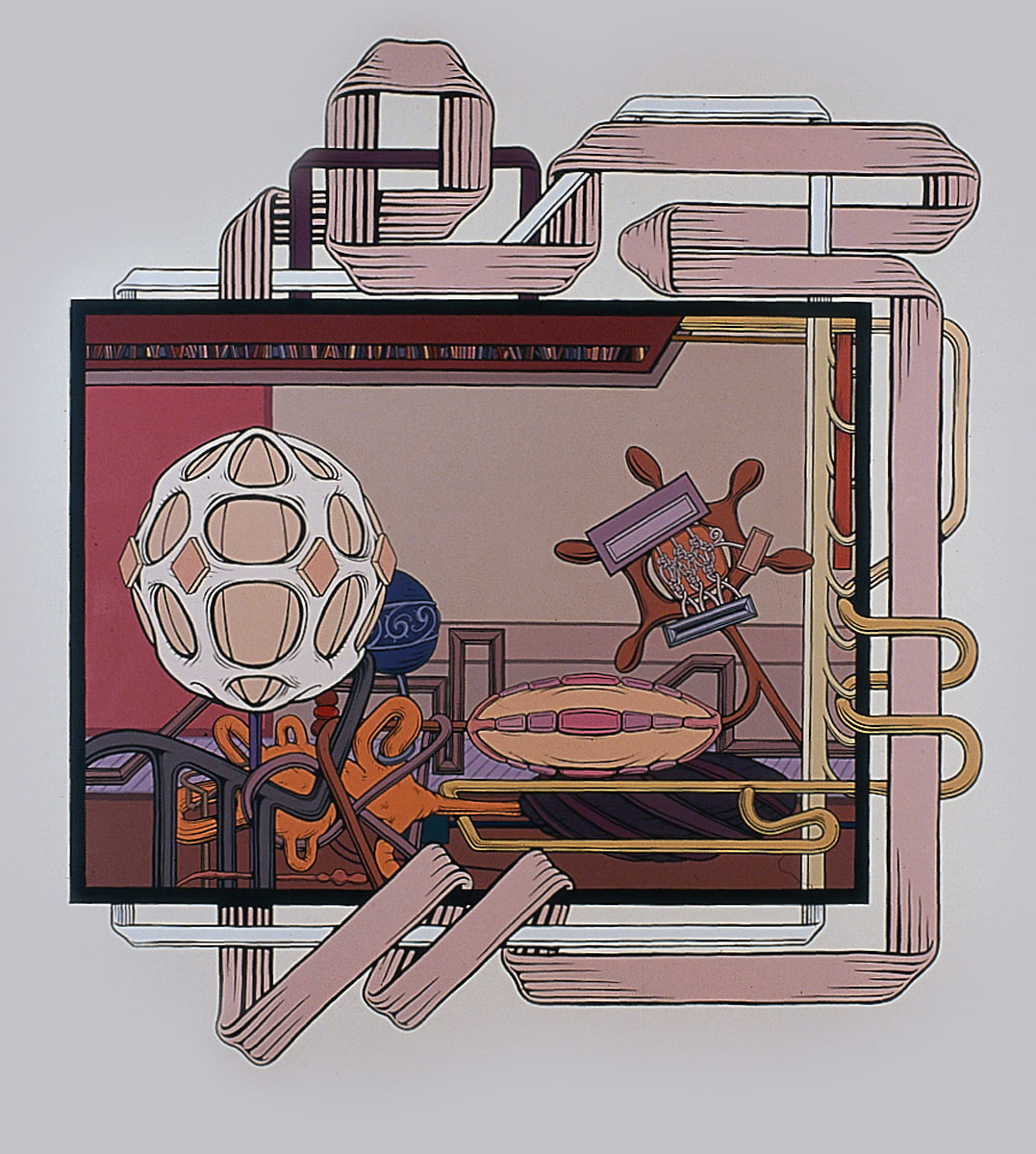
Fred Tomaselli, who discovered Art Forms relatively recently, notes that Haeckel’s mirror-image arrangements propose, in effect, their own meta-organism, a more-than-perfect symmetry which plays upon the “idea of the beautiful as it is coded deep within us.” He also acknowledges a comparison between Haeckel’s black backgrounds and his rationalized, proliferating layouts, and some of his own methods for animating a pictorial field. But at the same time, Tomaselli finds parts of Art Forms, particularly those plates featuring creatures farther up the evolutionary ladder, to be limited by a “precisionist rigidity.” In the (relatively infrequent) groupings of frogs, lizards, bats, and birds, Tomaselli diagnoses a telltale “scientific override”—a certain stiffness that can make “cartoons of nature,” especially when compared to the more sensual and vivid work of John James Audubon or Martin Johnson Heade. In Haeckel’s depictions of microbiota, on the other hand, “you see the scientist at work.” Tomaselli discerns that within the realm of the exotically small, where Haeckel could use a compass, French curve, and ruler with impunity, “he gets to sing.”
As a connoisseur of 18th- and 19th-century scientific illustration, Philip Taaffe also admires Haeckel’s contribution as a draughtsman, acknowledging that his drawings brought the field “to a new level of authority or life or animation … The brilliance of the graphic execution is undeniable; you have to be aware of these. You have to look and look.” Taaffe stops short, however, of touching; though his process often involves the silkscreening of biological illustrations in “gestural conjunctions,” and despite the fact that a couple of Haeckel’s more sinuous images have found their way into his work, on the whole he finds Art Forms “too willful, too aestheticized to use.” Susan Jennings agrees. Like Haeckel, Jennings actually spends time at the microscope, observing life forms that she cultures and photographs. She is interested in Haeckel’s “passion” and regards his drawings as “beautiful, fascinating,” but also uses words such as “uptight,” “oppressive,” and “claustrophobic.” “It’s something he’s imposed because he has looked for it until he’s found it. It’s not how nature is, necessarily.”
Take, as an example, Plate 61 of Art Forms. It features a radiolarian with the exoskeleton of a super-stellated Buckyball, a geomancer’s polyhedral dream, awesomely complex yet serenely Platonic. Though not a strictly scientific image, appearing as it does in a book aimed at general consumption, neither is it meant as fantasy or invention, raising possible suspicions about the draughtsman’s habits of fidelity to the organism. In Art Forms, the unmatched zeal for extracting architecture from the infinitesimal wigglings of life might be indulged as a kind of more-than-empirical insight; in one infamous case, however, Haeckel stands accused of out-and-out fraud.
To bolster his theory of developmental recapitulation—the cornerstone of his life’s work, his all-explanatory dogma defended to the day he died—Haeckel often illustrated comparative stages of the human embryo alongside those of lower vertebrates. The point was to demonstrate how humans pass through the stages of phylogenetic ancestry, how we climb in the womb, as it were, up the evolutionary tree–hence those “fish gills” and “lizard tails” observed in the fetus. (For that matter, the “Tree of Life” image, still beloved of evolution textbooks, is completely Haeckelian; he was the first to draw the differentiation of species, with all its apparent ramifying logic, as a brooding, twisted oak.[7]) Haeckel’s illustrations testified powerfully in favor of his argument that—in his famous motto—“ontogeny recapitulates phylogeny”: fish, frogs, chicken, cows, and humans all look the same at comparable stages of development, the higher animals passing through and beyond the terminal expressions of their evolutionary ancestors.
Recapitulation “promised to reveal not only the animal ancestry of man and the line of his descent but also the method of origin of his mental, social, and ethical faculties.”[8] A similar epistemological template stamped itself on a number of emerging disciplines, for example, on Freudian and to some extent Jungian psychology, where neurosis, paranoia, and mania were schematized as “primitive” vestiges, the child’s mind recapitulating the mental states of early tribesmen, etc. Even at the time, however, it was claimed by some of Haeckel’s peers that his telltale embryos were not to be found in nature. According to the late Stephen Jay Gould, a dogged foe of Haeckel’s distortions, Haeckel had “simply copied the same figure over and over again.”[9] Humans, in fact, have notable similarities with lower vertebrates only at the very beginning of development.
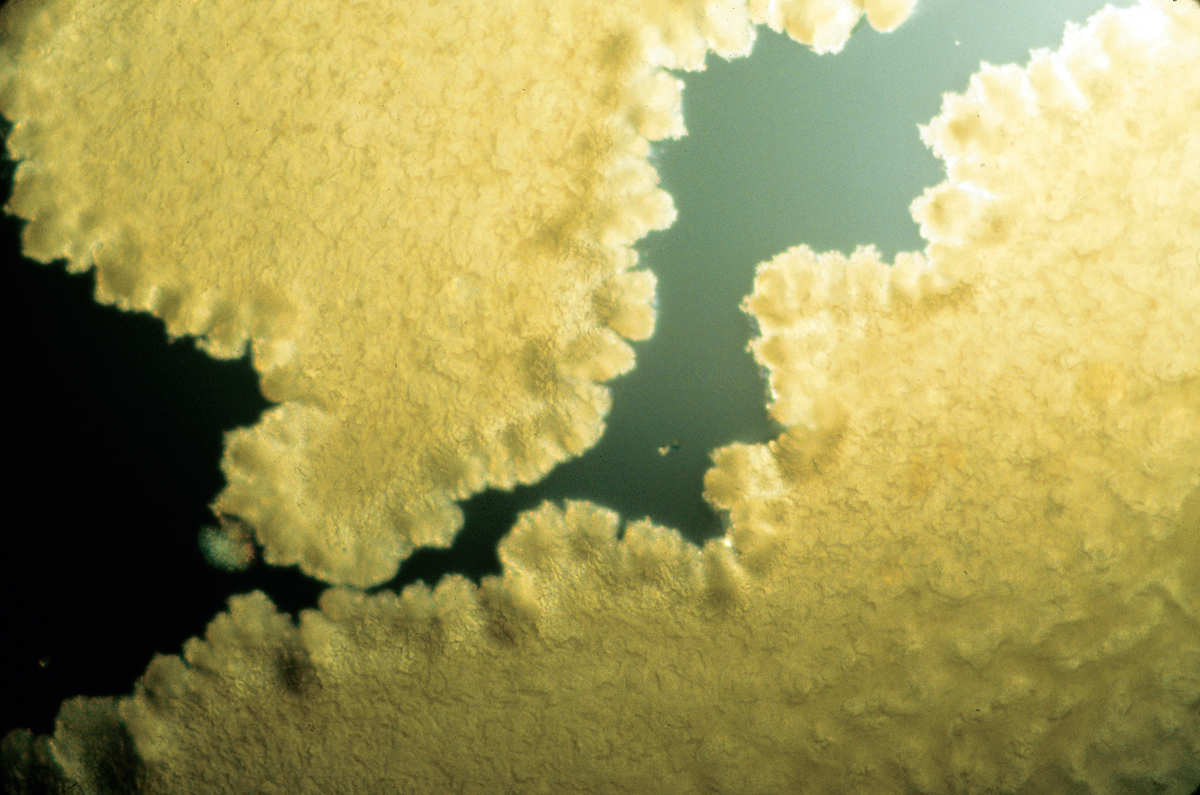
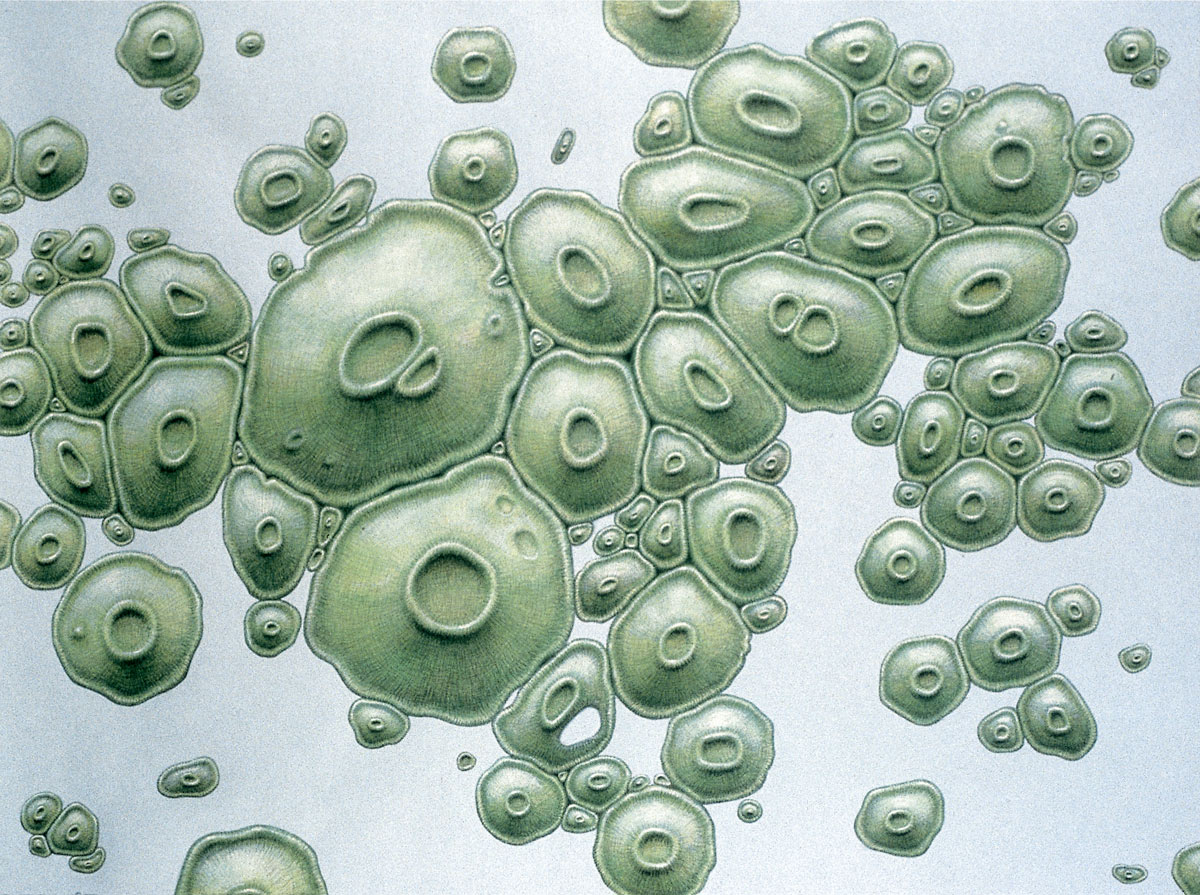
Haeckel dismissed the embryo controversy by claiming that “all diagrammatic figures are ‘inaccurate’”[10] and of course, however disingenuous as a defense, in a way this was perfectly correct—there is no such thing as an objective transcript of scientific observation. For the artists I interviewed, it is precisely this shifty topography that compels exploration; in one way or another, navigation of the art/science divide defines these bodies of work, and each of my respondents recognizes Art Forms’s problematic siting in this terrain. For Alex Ross, “art and science overlap most poignantly in the areas of research and discovery … Artists have no limits at all … but the beauty of science is that it is guided by the ultimatum of its own strictures: follow the rules or don’t call it science.” Ross, whose tightly rendered but imaginary biomorphs were fattened on the myriad delights of Art Forms, calls it “a revelation, to be sure, a prime mover in the germination of my thinking. The careful taxonomic display presented such a potent dream-world. The crux of my work is that what for, say, Kandinsky, were shapes and relationships, are for me organisms and communities.” This conception of pictorial autonomy was directly inspired by Haeckel’s aestheticization of life forms. As Ross puts it, “The work seemed to scream, ‘If nature can play reality designer, you can too.’”
Hubristic reality-design, conversely, is Alexis Rockman’s target. His work specifically addresses evolution and ecology, but from a pointedly sardonic angle; his current paintings present a wry natural history that he calls “psychedelic ecotourism.” Rockman discovered Haeckel in high school. His mother, an archeologist, was Margaret Meade’s assistant at the American Museum of Natural History, and as a child he had unusual access to its dioramas and displays. In these, as in the wilderness-born American tradition generally, plant and animal specimens were shown interacting within a total ecosystem, whereas Haeckel catalogued only closely related species deployed in frankly abstract, etheric space. Even the few attempts at populated landscape in Art Forms–the same that Tomaselli deems “cartoonish”–manifest a charting or listing tendency that Rockman calls “vertical” compared to the “horizontal” polymorphism of Hudson River School naturalists like Audubon and Heade. “European organization,” Rockman asserts, “is about putting the organism in a vitrine or box.”
Karen Arm, however, defends this isolating tendency, arguing for realms of organic truth in which aesthetic and scientific inquiry are allied. “‘Art forms in nature’ describes my work. Every time I pick up the book, it’s an affirmation of what I’m doing.” Arm’s paintings and drawings begin with observations of natural forms—branches, waves, spider webs, smoke—which she winnows from their chaotic matrix and reorders in dense, intuitive patterns. She describes her creative process much as Haeckel described his own, as heightened views that nevertheless ring true to the anarchic specificity of observation. As Arm points out, Haeckel’s depictions were empirically based, “but he still has his hand in it. That’s what makes him interesting to us now. His images are not dry; they have a life to them.” Or, as painter Tricia Keightley says, “a blob is not thought out”; Haeckel’s drawings demarcate a zone between the “gooey undefined and the schematic.” Still, like Philip Taaffe, Keightley finds that the eccentricity of Art Forms works against its direct utility. Haeckel’s work, she says, can be “intimidating,” precisely because it is so tempting as source material. If one succumbed, then “400 people would come up to you and say, ‘You know, that’s form number 10 on page 36, plate 17.’”
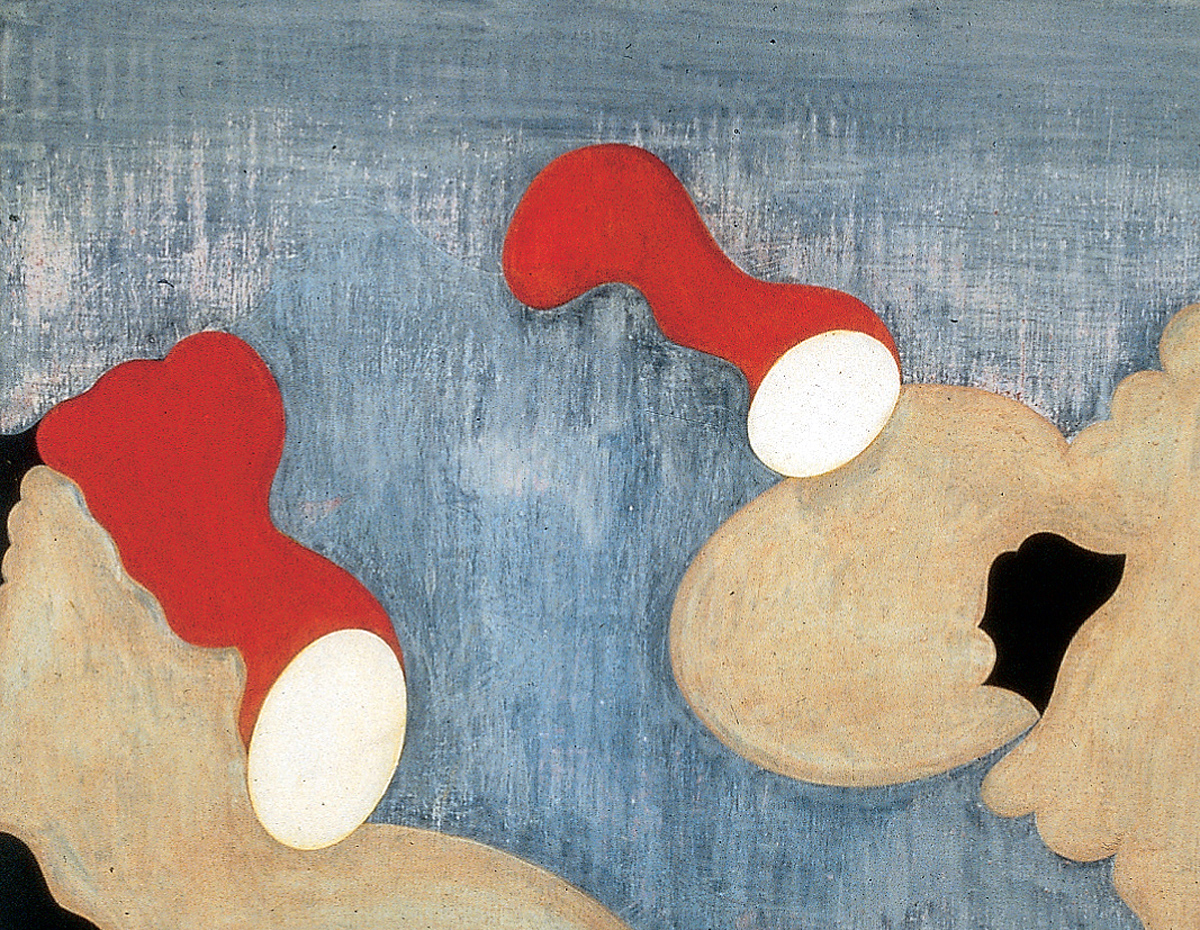
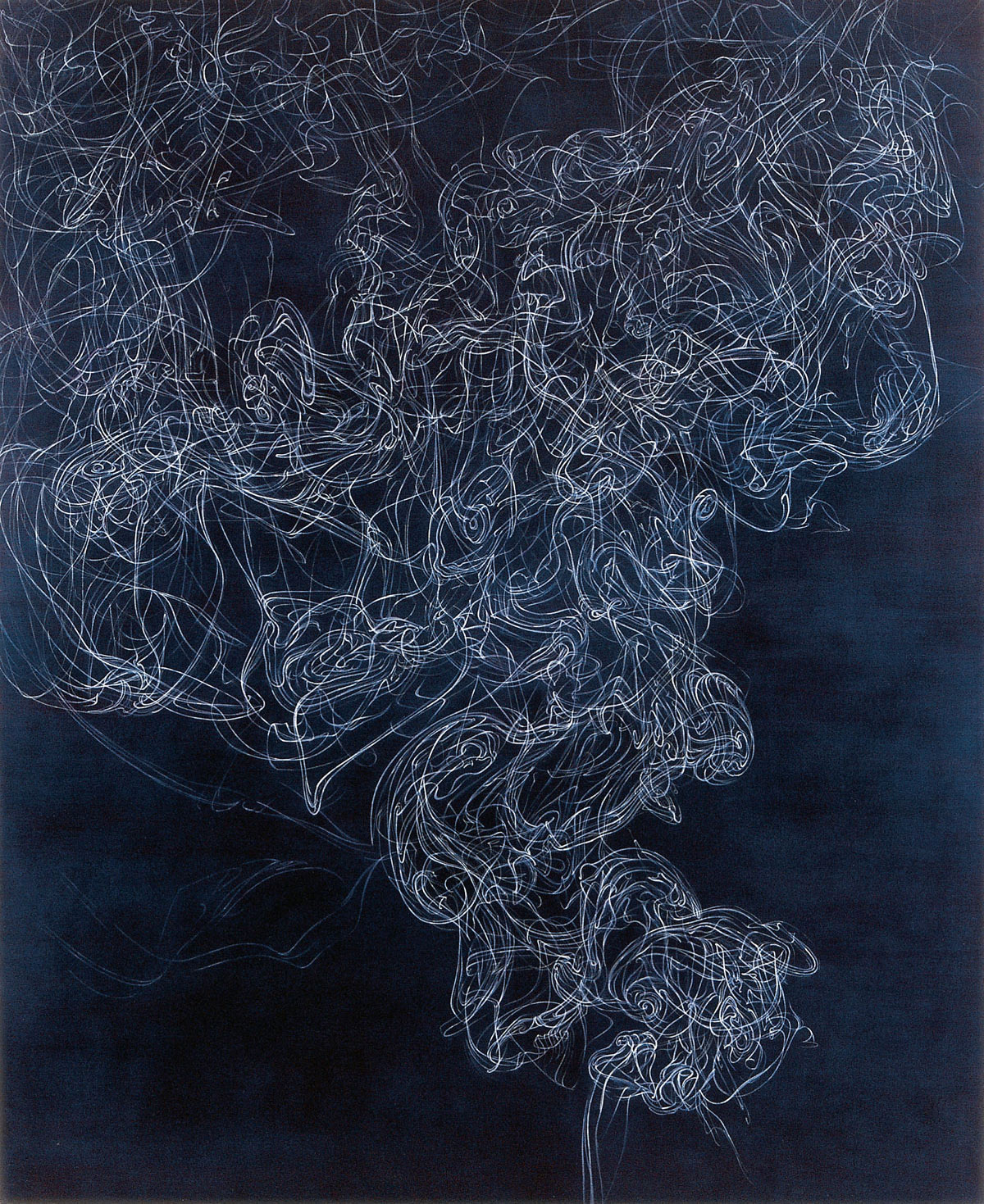
Whether admiring or skeptical, the artists I spoke to understand the siren song of Haeckel’s lapidary profusions to be their selling point. The totalizing confidence of his project—its implication that nature is art is design is science—is what compels, in spite of the implied denial of humanistic values like idiosyncrasy or accident or freedom. As Taaffe (who knew of Haeckel’s dark side) says, “there is an intellectual attraction to come to grips with that schizophrenia, that dichotomy, that strange will to systematize everything, to organize everything. But at the end of the day, it leads you to mass murder or something.” Tom Nozkowski, meanwhile, describes himself as an “anti-Haeckelian”: “I began with great enthusiasm. But the more I looked, the more pissed off I got about him. His ordering processes are very 19th-century, very Germanic, and I think they lie. Haeckel’s project seems to be skewed in the first place and maybe not for good purpose.” Nozkowski echoes Jennings’s feeling that Haeckel’s sin is that “he finds what he expects to find. For all the work’s ostensible beauty, it does seem a period piece, inherently nostalgic. I don’t question the seriousness of how he plays the game, I just think that intellectually he fails.” Nozkowski is not afraid to diagram an equivalence between the pictorial and the political: “It plays back into the work, a kind of self-assuredness or self-certainty, a predisposition to knowing the answer the minute you ask the question. I think that can always lead to evil—aesthetic evil first, then maybe evil in the real world.”
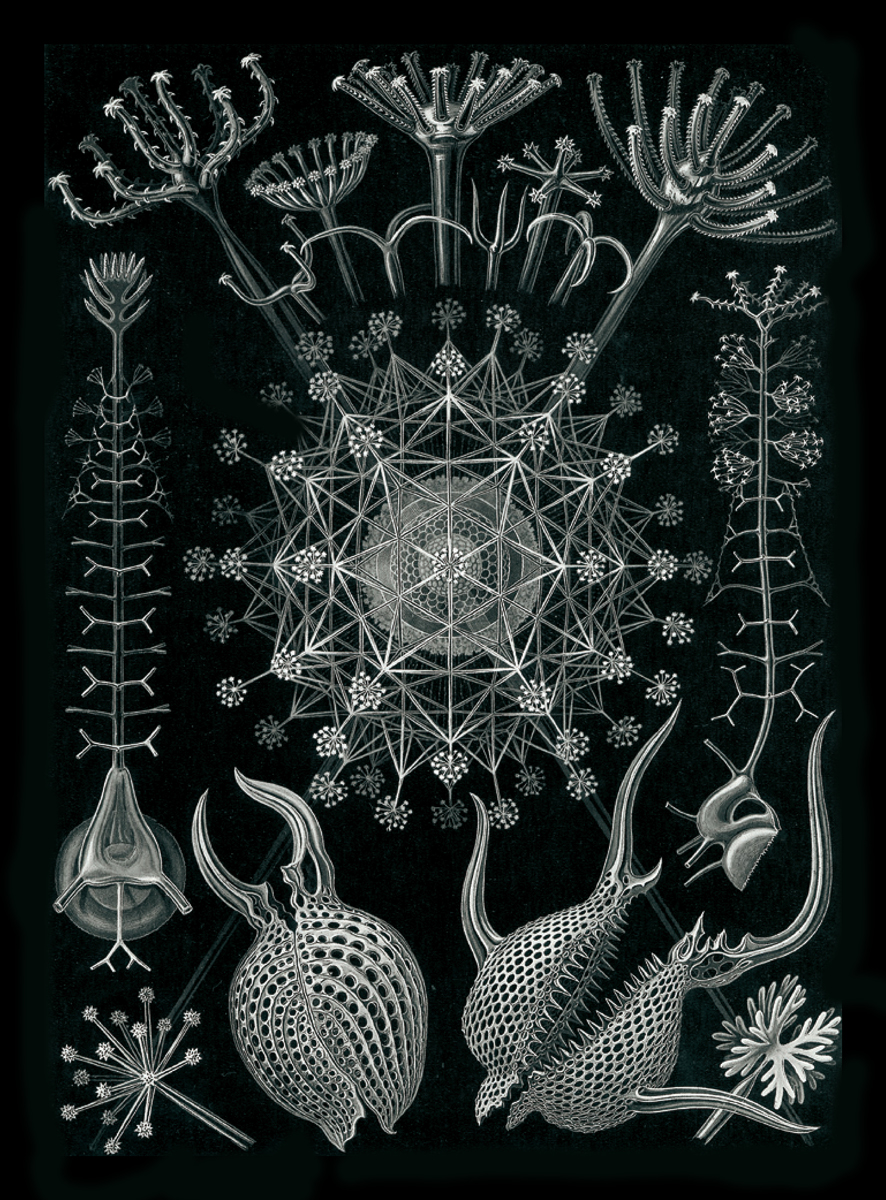
Perhaps. Leonardo designed ingeniously vicious war machines for the Sforzas and the Borgias, but we have no trouble calling him a humanist, and like the notebooks of the ur-Renaissance Man, Ernst Haeckel’s lithographs encompass an otherworldly formal clarity, teased out from messy reality by the delicate emphases of the trained hand; they evince a kindred delight in draftsmanship in service to science, a devotion to a truth higher than mere optical objectivity. Both Haeckel and da Vinci maintained a boyish fascination for spiky armored creatures, for the gracefully fantastic and grotesque. Of course, one is the greater scientist and the other the greater artist. But the megalomaniacal determinism that tints the edges of Haeckel’s vision signals, perhaps, the last shudder of a dying da Vincian ideal, a union of curiosity and craftsmanship, poetry and industry, science and art. Perhaps Haeckel’s preternatural exactitude is truly pathological. But if so, the force of his obsession, while edifying in its failures, only adds conviction to the appeal of the ancient argument he urges—that beauty is the proof of natural intelligence.
The artworks by Karen Arm and Tricia Keightley were published in the wrong orientation in the print edition of this issue. We regret the errors.
- Haeckel’s delicate pencil and ink drawings were brilliantly interpreted by the lithographer Adolph Giltsch. A thorough assessment of Art Forms in Nature would require that their separate contributions be disentangled.
- Ernst Haeckel, Art Forms in Nature (Munich & New York: Prestel Verlag, 1998), p. 27.
- Art Forms in Nature was kept in print for years by Dover Publications in their catalogue of uncopyrighted clip-art oddities, alongside compendia of Victorian stencils and 19th-century political cartoons. In 1998, Prestel issued a superb color version of the book.
- Krystallsee is the title of a book published by Haeckel in 1917.
- Daniel Gasman, Haeckel’s Monism and the Birth of Fascist Ideology (New York: Peter Lang Publishing, 1998), p. 157. See also Gasman’s The Scientific Origins of National Socialism: Social Darwinism in Ernst Haeckel and the German Monist League (London & New York: MacDonald, 1971).
- Ernst Haeckel, The Riddle of the Universe (New York: Harper & Bros., 1900), p. 328.
- Here is another example of Haeckel’s insightful but dangerous mixing of science and art. For a detailed discussion of the misleading teleological subtleties of Haeckel’s trees of life, see Stephen Jay Gould’s Wonderful Life (New York: Penguin, 1991), especially pp. 263–267.
- Ibid, p. 116.
- Gould, “This View of Life,”Natural History, March 2000. Those phony embryos were recently discovered persisting in textbooks, and creationists have blustered about finding Haeckel’s skeleton in the closet of evolution ever since. See, for example, M. K. Richardson et al., “Haeckel, Embryos, and Evolution,” Science 280:983-985 (1998). Haeckel’s dogma of recapitulation had lost its luster on any terms by 1910 or so, when it became “unfashionable in practice, following the rise of experimental embryology, and untenable in theory, following scientific change in a related field (Mendelian genetics).” Stephen Jay Gould, Ontogeny and Phylogeny (Cambridge: Belknap Press, 1977), p. 77.
- Ernst Haeckel, The Evolution of Man: A Popular Exposition of the Principal Points of Human Phylogeny and Ontogeny, vol. 1 (New York: Appleton, 1897), p. xxxv.
David Brody is an artist who lives and works near the Kool Man depot in Brooklyn.
Spotted an error? Email us at corrections at cabinetmagazine dot org.
If you’ve enjoyed the free articles that we offer on our site, please consider subscribing to our nonprofit magazine. You get twelve online issues and unlimited access to all our archives.